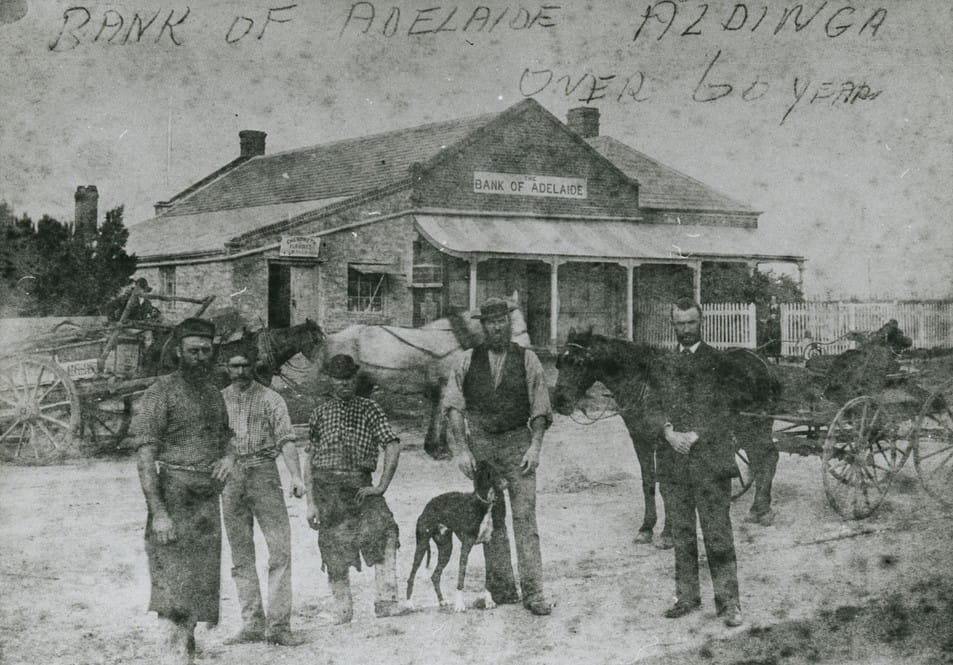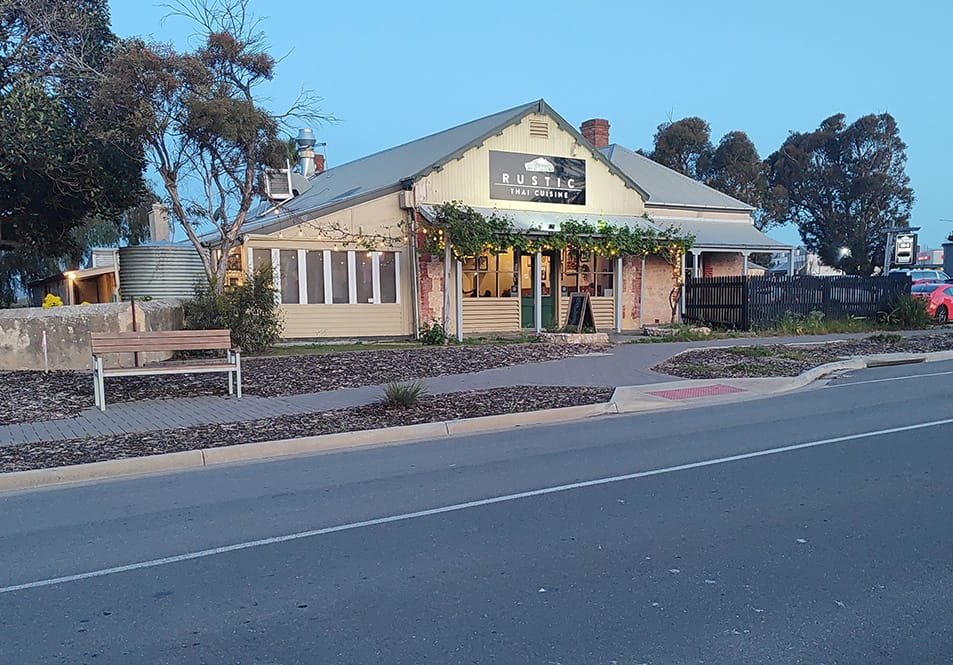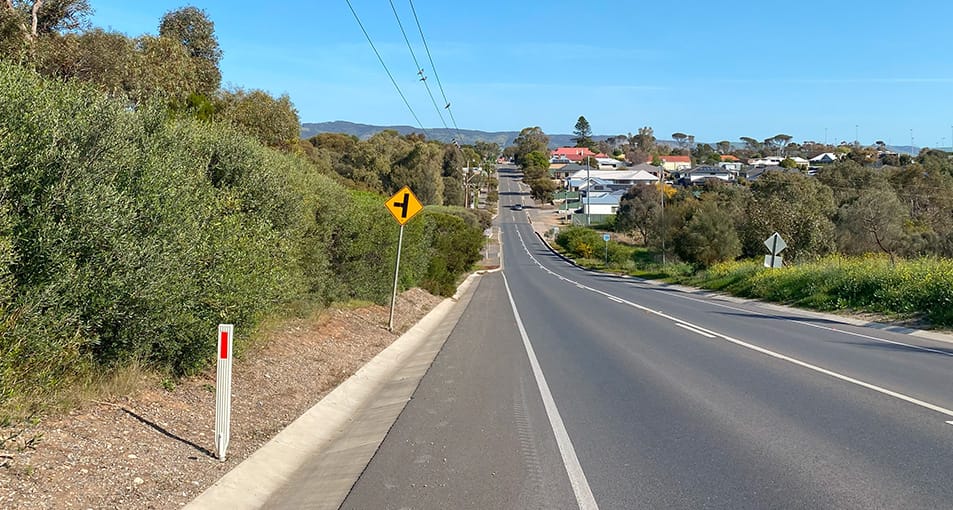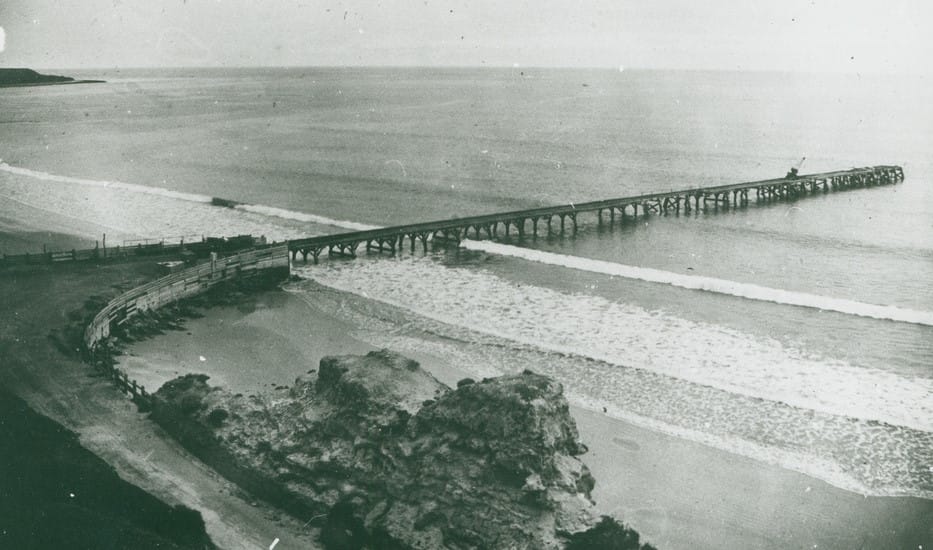Our Region's History
Aldinga Township
The original township of Aldinga was originally named ‘Downingsville’, and was located in what is now called ‘Whites Valley’.
Aldinga township became a busy spot with South Road (servicing the inland settlements south of Adelaide, and extending to Cape Jervis) and Old Coach Road (servicing the coastal communities north of the township) meeting in the main street of the town.
The name is taken from the Kaurna Aboriginal word Ngaltingga. One of the meanings of this was ‘a meeting place’ and that also has modern significance for the road junction mentioned above. Other meanings attributed to it are: ‘much water’, ‘good place for meat’, ‘open wide plain’, ‘battle or burial ground’ and ‘tree district’.
Aldinga’s commercial worth was clearly indicated by the fact it had two hotels; Hart’s Temperance Hotel and the Aldinga Hotel (built 1851). Pengilly’s blacksmith shop (opened 1859) did a roaring trade and later became an auto garage and fuel supplier. It was also the site of the local undertaker. It is now the home of Goodness Cafe.
The town became the district centre for quite a few years with the ‘District Council of Aldinga’ being formed in 1856 and continuing until 1932 when it amalgamated with the District Council of Willunga. It was later to be absorbed into the Council of the City of Onkaparinga.
The Aldinga Post Office was the one used for telegraph transmissions during the Star of Greece tragedy.
The Aldinga School on Port Road was opened in 1856 and closed in 1981 with the construction of a new school. The new school was opened by Prince Charles (now King Charles III) the following year and has since become the Aldinga Beach B-7 School. St Ann’s Anglican Church was built just south of the township on South Road in 1865.
The Methodist (now Uniting) Church in the main street had a ship’s bell as its church bell until it mysteriously vanished one night. It has not been seen since. Its cemetery, adjacent, is the resting place for some of those lost in the Star of Greece shipwreck.
The current Aldinga Institute was built in 1935 to replace the original built in 1860.
While Coach Road Aldinga is still a popular centre to visit, today the business centre has now largely relocated to Aldinga Beach (see below).




Port Willunga
This was once the second busiest port in South Australia (after Port Adelaide). It was used for shipment of grain and flour from the local farms and mills; and later slate from the Willunga quarries.
It had two jetties built at different times. The first was built in 1853 and the second in 1868. Cargo from larger ships was carried to the jetty by small ships called ‘lighters’.
Time brought inevitable changes to Port Willunga. By 1892 the trade to Melbourne of slate roofing tiles was dead because iron was available there more cheaply. By 1900 the local flour mills had ceased production. Without maintenance the jetty had been broken up and a part was washed away in a storm in 1915. It was then demolished, for safety reasons, used by the defence forces as target practice. The remnants of the jetty can now be seen from the Esplanade and from the Star of Greece restaurant.
The fishermen’s caves, adjacent to the jetty remains, were dug out by the How family and used by the fishermen to store their boats.
The port was notoriously dangerous in stormy conditions and over the years there were several shipwrecks.
Being such a busy port, Port Willunga also had two hotels: the Seaview Hotel on Port Road, the Pier Hotel across the creek (fondly name Uncle Tom’s Cabin), as well as the Altona Guest House.

Aldinga North (White's Valley)
A busy little community in the heart of a grain growing district, the main street (now called Adey Road) was a bustling centre with general store and butcher as well as housing and mill worker’s cottages (nicknamed Paddy’s Row). There were two flour mills and a butter factory (circa 1890) in the area as well as Baptist (1860 – 1899), Congregational (1848) and Presbyterian (1856 – 1880) churches. The butter factory worked in conjunction with the Myponga creamery.
Samuel White, the business entrepreneur, after which the Valley was named, owned one of the flour mills (built 1844) as well as turning his hand to ship building. He and his partner built the vessel the Maid Of The Mill in 1854, to service the larger ships at Port Willunga.
He also bought and sold several other ships and was heavily involved in the shipping trade at Port Willunga.
George Adey’s Hampshire Hotel, situated on the corner of Adey Road and Little Road traded from 1858 to 1869 under six different licensees. George Adey being the first.
In 1935 renowned artist Sir Ivor Hele leased the property. He was awarded the Archibald Prize for portraiture on 5 occasions and died there in 1993.
Butterworth’s cottage (Mulberry Cottage) and the remains of Butterworth’s Mill (built 1848) can be seen on the old Aldinga Road, now renamed Flour Mill Road.
Mrs Pethick ran the Pethick Nursing Home, from 1922 – 1940 for nursing mothers.The building had previously been a 2 storey shop.
These sites may be visited along the newly constructed shared use path (2024) linking Aldinga and Willunga.
Aldinga Beach
With increased tourism and the subdivision of farmland for housing, the population gradually shifted from Aldinga to the smaller coastal settlement of Aldinga Beach, about three kilometres west, and this has become the hub of the district, with a shopping centre, Post Office and facilities. The original town centre took a back seat for a while until a revival of trade on Old Coach Road brought it back to life. The recently renovated historic Aldinga Hotel and the Temperance precinct have proved popular sites.
The demands of a rapidly increasing population have brought a new school, Payinthi College, further development of the Catholic School, now a campus of Cardijn College, and the Aldinga Campus of the Southern Vales Christian College. There are several child care centres and the Aldinga R-7 Primary School. Aldi and On the Run have now entered Aldinga’s formerly semi-rural world, and the duplication of Main South Road, in progress 2022-2025, is bringing Aldinga Bay closer to the city of Adelaide.
Sellicks Beach
Known as Witawali or Witawodli by the Kaurna people, Sellicks Beach is situated at the southern extent of Aldinga Bay. In 1925 a subdivision of part of section 665 of the Hundred of Willunga was developed by Aldinga farmers, George and Robert Herrick, and gazetted as a place in 1993.
A small group of shops and a Post Office support a small but growing population. Historic buildings include the Victory Hotel (1858) and the former chapel (1862), now home to the Berg Herring cellar door.
North of Sellicks Beach is the Washpool Conservation Park, the Aldinga Scrub Conservation Park, and the Aldinga Reef Aquatic Reserve. The Tjilbruke Dreaming Track, that originates in Warriparinga Wetlands, stretches along the coastline of Aldinga Bay, and continues south to Cape Jervis. Whale sightings are not uncommon in winter, while summer sees the beaches popular with locals and visitors who park their cars on the sand and enjoy the beach.

